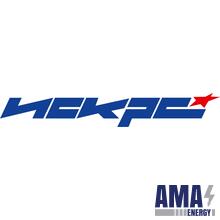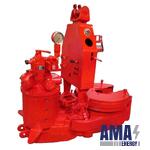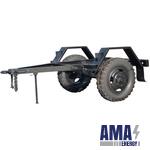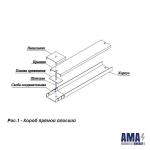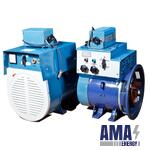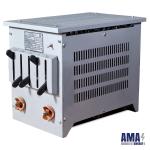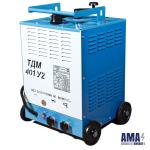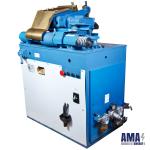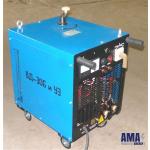Iskra Novotkinsk Plant
The ISKRA plant, having been in the welding equipment market for more than 75 years, today produces its wide range. The main serial products of the enterprise are autonomous welding units, welding generators, transformers, welding machines, resistance welding machines (spot, butt, seam), invertor power sources, autonomous diesel generator sets, cable laying products, embedded metal products. It should be noted that a number of machines are produced only with us.
The village of Novoutkinsk. The locality that you will not find on every map of Russia. Like thousands of other provincial villages, which with their imperceptible fate, life and history create for the Urals an image of the support edge of the state.
The history of the plant, on the one hand, is very remarkable and unique, and on the other hand, it is absolutely typical of most Ural industrial plants. Not far from the tributary of the Chusovaya River - on the Utka River in the village of Utkinskaya Sloboda in the distant eighteenth century, by order of the head of the Ural state-owned factories V.N. Tatishchev began the construction of an iron foundry and ironworks. During the formation of the enterprise, at first its owners were very significant people who left an important mark in the history of Russia. The names of Count Yaguzhinsky and industrialist Savva Yakovlev appear in almost all textbooks on Russian ambiguous history. The plant designated its important historical place by the fact that during the war with Napoleon smelted metal for artillery pieces.
Economic, military and political upheavals of the late nineteenth and early twentieth centuries more than once put the plant on the brink of extinction. The company gained a second wind on the wave of industrialization, which gave a powerful impetus to the overall development of industry in young Soviet Russia: the inefficient metallurgical production of a small plant in 1927 was transformed into a mechanical plant, which was developing rapidly, gaining new infrastructure. By 1937, the village of Novaya Utka was renamed the working village of Novoutkinsk.
In 1941, industrial enterprises from large Soviet cities began to concentrate in the Urals. The land turned into a powerful rear industrial fist for the war against fascist Germany. So, according to the decision of the Soviet government, due to the threat of the capture of Leningrad, the Electric factory was evacuated to Novoutkinsk along with workers, their families and equipment. Under the leadership of the director of the plant I.M. Gamal, the workers and residents of the village unloaded, delivered and installed the arrived machines, and a month later they began production of welding equipment for the needs of the military industry - for welding armor of tanks. So the enterprise “Plant No. 687” appeared. In this historical tour, the connection of times is invisibly traced: between the First and Second World Wars - a plant from a remote village in the Urals created the history of the great Russian victories. And September 1941 is considered to be the date of birth of the first electric welding equipment plant in the Urals.
In 1954, the company received the name Novoutkinsky factory of electric welding machines and apparatuses "Spark".
The sixties and eighties of the twentieth century can be called the heyday of the enterprise and the village as a whole. The system of Socialist state order allowed the enterprise to work both in the domestic and foreign markets. The plant's products were in demand in almost forty countries of the world.
At this time in the village there is a boom in housing construction. Almost three dozen five-story apartment buildings, four kindergartens, a new school grew up in the village. There is also a population explosion: the village did not reach the status of the city quite a bit. At this stage, the plant was successfully managed by E.I. Ivanov, A.M. Samsonov, V.A. Perminov, V.K. Mists. A tense three-shift work schedule, well-established supply chains, continuous monitoring of production - all this creates a picture of a successful and self-sufficient enterprise.
An interesting fact: on the territory of the plant, next to the machine shop, there is an impressive bust of V.I. Lenin, under which in the early seventies of the last century placed a capsule with a message to the descendants. It was bequeathed to open on the centenary of the October Socialist Revolution. Undoubtedly, it will be interesting for new generations of Novoutkintsy to read the lines of the message written by their predecessors, people who breathed new life into the factory and the village.
On the crest of general economic growth, the beginning of the two thousandths is a new attempt to establish foreign economic relations. And not with anyone, but with the American Miller Electric Corporation. To represent the scale of activity, this corporation can be associated with the American automotive giant General Motors or the German Mercedes. The exchange of specialists, the formation of a clear schedule for the development of the project allowed for three months to put into operation the conveyor production for the production of cutting-edge welding units. In parallel, a total modernization of production was carried out: antediluvian press equipment was replaced by TRUMPF die-cutting and bending centers, and old universal machines were replaced by OKUMA automatic lathes.
Today, the plant is one of the main suppliers of cable metal structures and embedded products for the fourth power unit under construction at the Beloyarsk nuclear power plant. A new management team is being formed of young home-grown personnel, ways of production cooperation with long-term competitors are being found, the basis of economic services of the enterprise is being restored, production is returning to the rails of clear cost planning and effective cost management.

